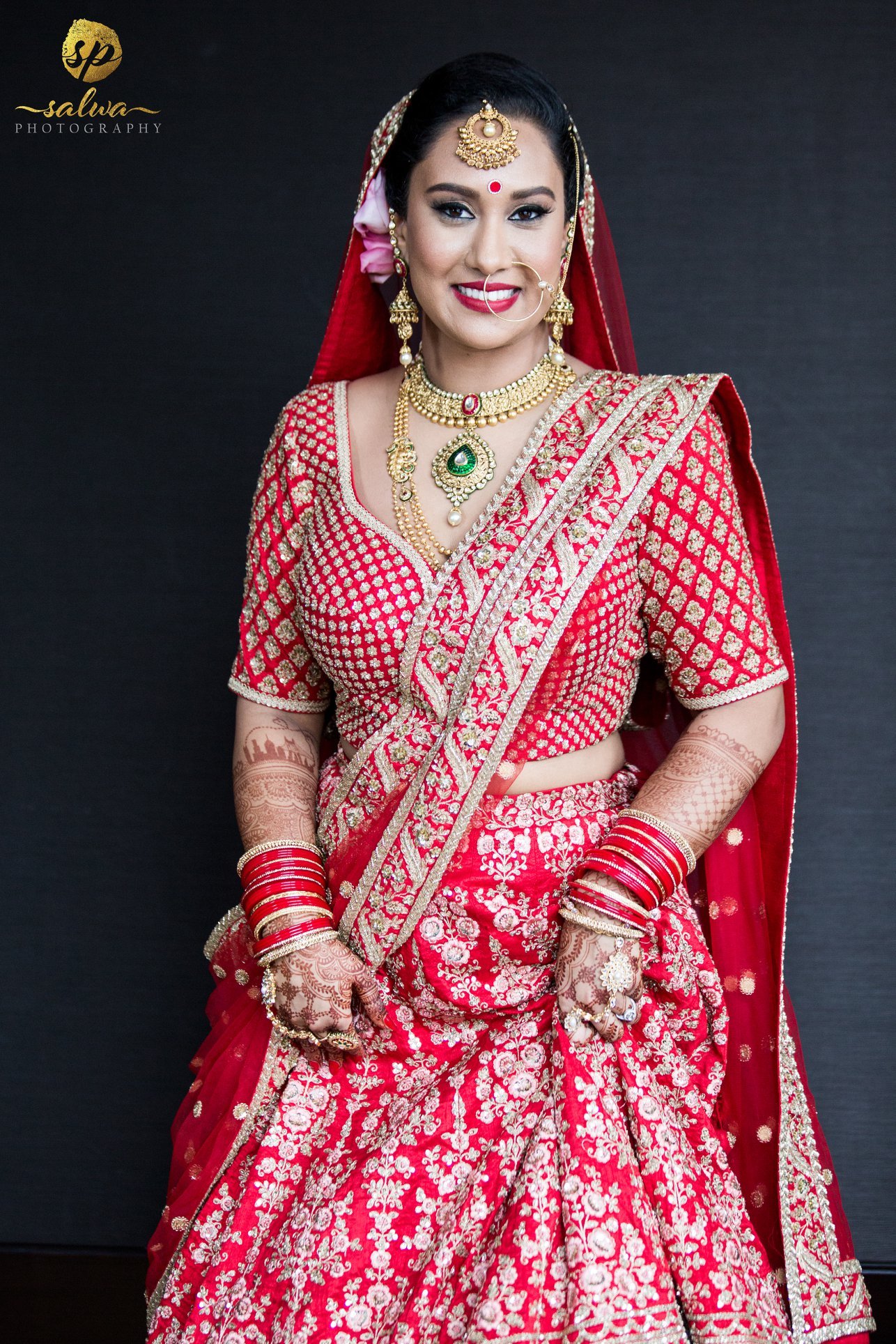Why Jewelry is so Important in South Asian Weddings
For South Asian weddings, jewelry plays a much bigger role than just completing a bride's look. The jewelry they wear aren't only glamorous and vibrant, but they're symbols of tradition, culture, and love. The pieces of jewelry worn by the bride signifies that she is to become part of her husband's extended family. The heavier the nuances of these jewelries, the bigger the role they play in the legacy of the family and the jewelry itself. For Hindu weddings, the jewelry a bride wears carries much religious significance. The pieces signify that the bride is asking for protection from the gods and goddesses in Hinduism, and they act as a way to ask for their blessing. Whether it's elaborate gold necklaces, ornate bangles, or intricate earrings, jewelry plays a significant role in these weddings. In this article, we go over some of the most significant pieces of a South Asian bride's jewelry look, starting with the overall significance of gold.
Significance of Gold
Gold is considered auspicious for major life events, such as a wedding. For Hindus, it is believed that gold has the power to purify anything it touches. It’s considered a sign of power and wealth, and it symbolizes good health, prosperity, and femininity. Gold is also simply an amazing material for jewelry because it is durable. It is hard to tarnish gold despite everyday use. In South Asian weddings, gold is supposed to be worn above the waist, due to its significance. Because of this, most brides will wear gold above the waist, and silver below the waist for pieces such as payal and bichhyia (which we will discuss in detail in this article).
Payal (Anklets)
Payal, or anklets, are worn in conjunction with bichhyia, or toe rings. Bichhia are worn in pairs on the second toe of both feet. They are worn as a symbol of marriage and are said to provide acupressure benefits. It is also believed that the nerve on the second toe is directly connected to the uterus, symbolizing good fertility for the brides. Similarly payal are considered to be supportive of a women’s health, but particularly her reproductive health. They are also believed to bring positive energy and overall great health. Payal are heavily embellished for the purpose of being loud enough to signify a woman’s arrival. Both payal and bichhyia are made out of silver since they are worn below the waist.
Bangles
Gold, glass, or diamond-studded bangles are an absolute must for every Indian bride. The tinkling sound they make is reminiscent of the laughter brought from the joy of a wedding day. Like most South Asian wedding jewelry, bangles also hold cultural and traditional significance. They signify a newly married woman and are said to promote good fortune. Although most South Asian brides wear bangles, the colors and materials differ depending on the region. For example, Punjabi brides wear a specific set of bangles called choora. They consist of a pair of 21 red and ivory bangles and are meant to be worn 40 days after the wedding. In southern regions, it is common to wear gold and green bangles, with green representing fertility.
Earrings
The earrings a bride chooses often depend on her necklace and hairstyle. One common style of earrings a bride might decide is called jhumki, which refers to the traditional bell-shaped earring design of India. The earrings she wears symbolize her mental and physical health. A bride’s earrings not only enhance her beauty, but also symbolize her marital status and connection to her new family. They are often passed down through generations, serving as cherished heirlooms that connect the bride to her family’s heritage. Beyond their aesthetic appeal, these earrings play a key role in the bride’s transformation into a married woman.
Maang Tikka
A bride’s maang tikka is worn on the center of her forehead at the part of her hair. It is an important symbol of her status as a married woman, and is chosen because it complements the particular shape and size of her forehead. The specific area of the head that it’s placed on is believed to house the sixth chakra, which is commonly referred to as the “third eye.” It is said to promote spiritual, emotional, and physical connection when she and her spouse come together for their marriage.
Nath (Nose Rings)
A bride’s nath, or nose ring, is said to signify that she is of marrying age. It is worn to pay reverence to the goddess Pavarty, the Hindu goddess of marriage. Although nath comes in all different shapes and sizes, such as pins, hoops, and studs, it often matches the rest of her jewelry. Nath can be worn on either side of the nostril, but it is common to see it on the left side. It is believed that piercing the left side of the nose will not only help promote fertility, but also relieve pain during pregnancy.
Necklaces
Bridal necklaces are key to any South Asian wedding. They are said to signify protection and prosperity. In Hinduism, bridal necklaces are called mangalsutra, or “sacred thread.” They are popular in Northern India and are made up of a gold chain with black beads, which is believed to protect from the evil eye. During the wedding ceremony, the groom will tie the mangalsutra around his bride’s neck, which symbolizes the couple’s unity. These necklaces serve as another expression of the cultural and religious values that most South Asian jewelry carry during weddings, making them an integral part of every Indian bridal look.
Haath Phool
Also known as hath hamal, hand chain, or hath panja (depending on the religion), haath phool, or “hand flower” is a beautiful piece of jewelry that is worn on a bride’s hand. Instead of a typical engagement ring like in Western-style weddings, haath phool is a web-like hand ornament. Although most consist of intricate designs, modern brides can also choose a classy, daintier design such as those with simply embellished golden chains ending in diamond or platinum rings.
For South Asian weddings, it is clear that the significance of bridal jewelry is much more than just adding a final touch of sparkle. Their jewelry signifies the cultural, traditional, and religious significance of their families, with some also symbolizing the unity of the bride and her spouse. These pieces of jewelry are so much more than simple adornments, but rather show expressions of a heritage that values connection, protection, and devotion. As we admire the intricate craftsmanship of these pieces, let’s also remember the deep cultural roots and traditions that they represent.
If you want to read more about bridal, makeup, and skincare tips, or if you want to learn about our bridal services, check out the rest of our website at cinderellabridez.com. Or if you’re curious about our CEO’s business journey, visit her website at barbiepatel.com!








